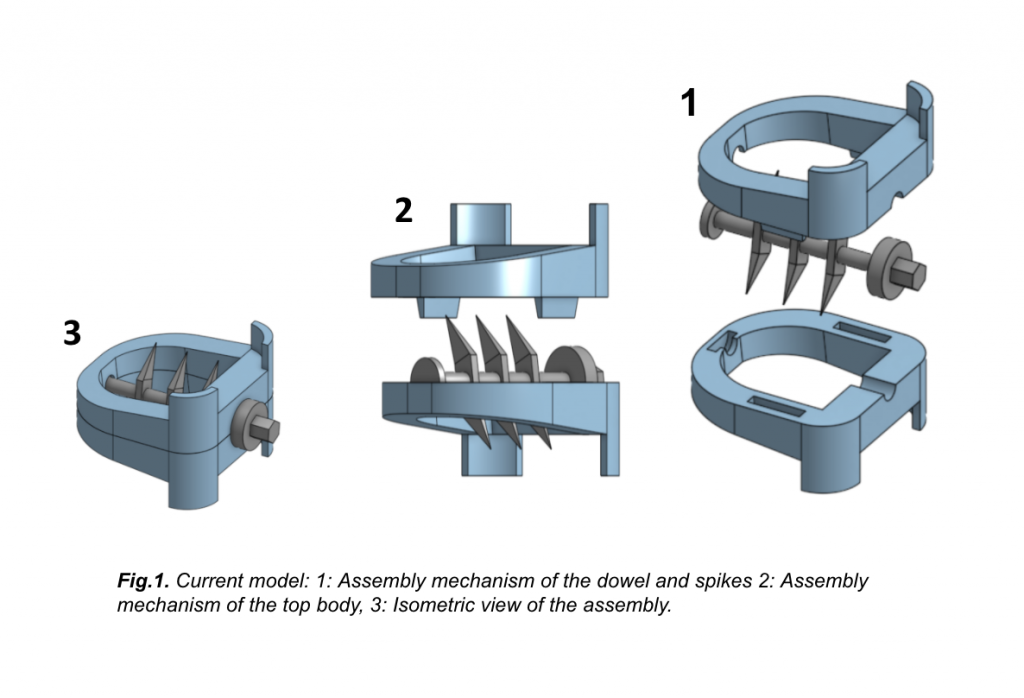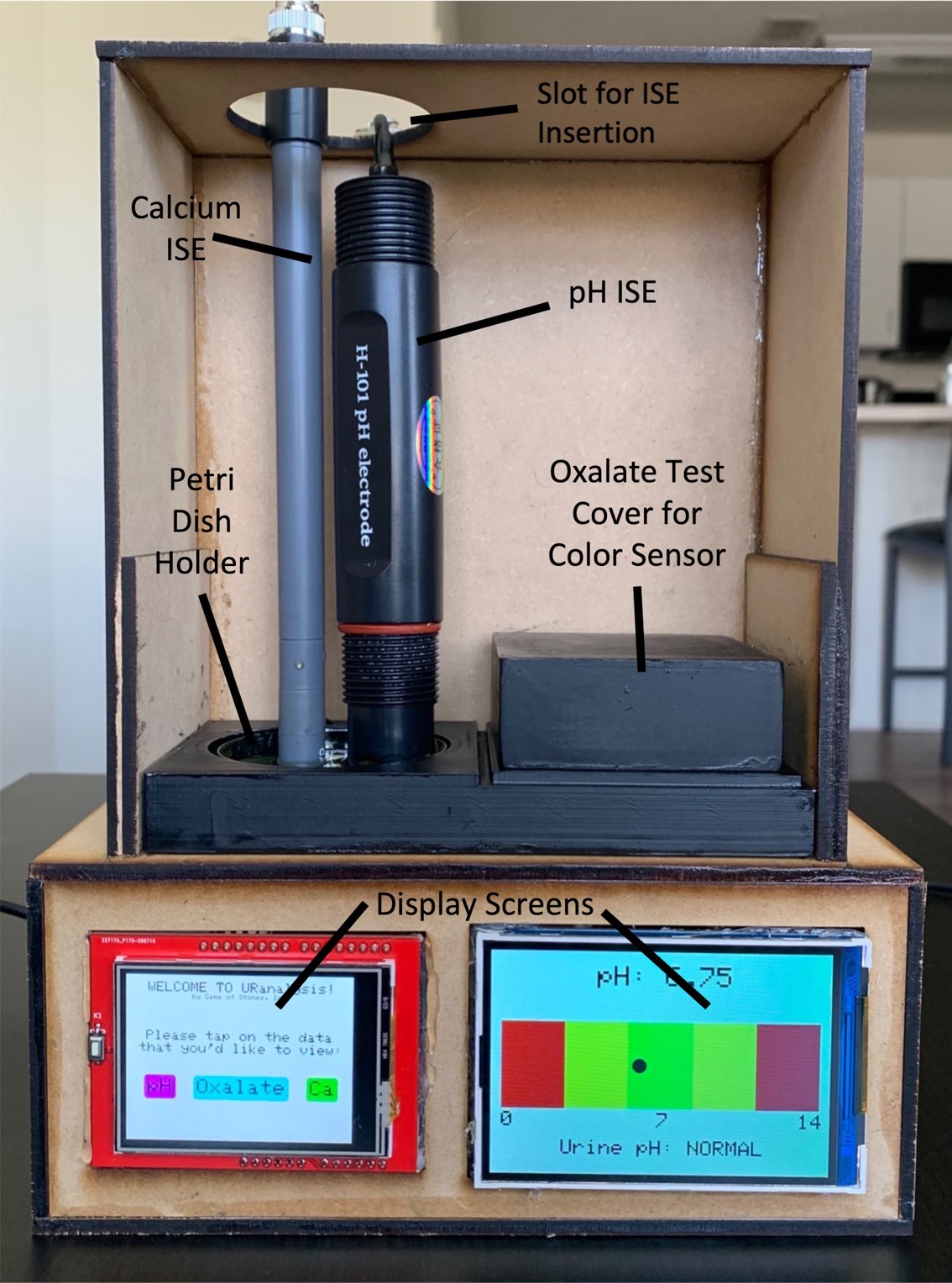A team of biomedical engineering students competed for the 2020-2021 BMES Student Design Competition, sponsored by Medtronic. This year’s competition was broken down into four tracks, mechanical/electrical, electrical/computer science, chemical/biological, anything COVID-19 geared.
Two UF teams were selected as finalists for the final competition, Team Game of Stones & Team Fast and Fusion.
Top Finalists in the Mechanical/Electrical Track: Fast & Fusion (3rd Place)
Designed by: Ramya Saldanha, Armoney Emmanuel, Zachary Jordan, Saumya Kapoor, Kimia Mahboub and Sara Thorsness
 The team sought to create a minimally invasive device for facet fusion that can be implanted through a single 1-inch incision for each affected joint to provide sufficient stabilization. Rather than driving multiple screws into the affected vertebrae and connecting them with rods to fuse the joints (the current gold standard), the Rotary Blade Implant (RBI) device is tapped into the facet joint space and locked into Place by turning a dowel with a set of 3 titanium blades into the joint surfaces until it locks 90 degrees relative to the horizontal starting position, requiring only a T-handle hex wrench for implantation. The main body of this device is 3D printed in polyether ether ketone (PEEK), a material with properties more similar to the vertebral bone than the currently marketed devices for facet fusion. While the design’s titanium dowel serves as the initial locking mechanism, the device facilitates true fusion of the joints by allowing bone growth through and around the hollow PEEK frame. This device was designed to reduce total surgery time and number/size of incisions required, lower misplacement rates, and improve long-term outcomes for facet arthritis patients. The design was developed in collaboration with Dr. Siva Sriharan from the UF Department of Neurosurgery.
The team sought to create a minimally invasive device for facet fusion that can be implanted through a single 1-inch incision for each affected joint to provide sufficient stabilization. Rather than driving multiple screws into the affected vertebrae and connecting them with rods to fuse the joints (the current gold standard), the Rotary Blade Implant (RBI) device is tapped into the facet joint space and locked into Place by turning a dowel with a set of 3 titanium blades into the joint surfaces until it locks 90 degrees relative to the horizontal starting position, requiring only a T-handle hex wrench for implantation. The main body of this device is 3D printed in polyether ether ketone (PEEK), a material with properties more similar to the vertebral bone than the currently marketed devices for facet fusion. While the design’s titanium dowel serves as the initial locking mechanism, the device facilitates true fusion of the joints by allowing bone growth through and around the hollow PEEK frame. This device was designed to reduce total surgery time and number/size of incisions required, lower misplacement rates, and improve long-term outcomes for facet arthritis patients. The design was developed in collaboration with Dr. Siva Sriharan from the UF Department of Neurosurgery.
Top Finalists in the Chemical/Biological Science Track: Game of Stones (3rd Place)
Designed by: Matthew Blackton, Joshua Burgos, Patrick Costello, Amberlyn Hauck, Saiyuri Naidu, Rachael Neary and Danelle Smith

The goal of this project was to create an at-home testing device that could support kidney stone prevention. Research and discussion with the project sponsor (Dr. Vincent G. Bird, Department of Urology at the University of Florida) led to three key measurements that would be the most helpful in early kidney stone prevention: pH, Oxalate, and Calcium. These parameters not only predict stone recurrence, but patients can use these to act upon to make lifestyle changes. A simple at-home design that could test urine in fifteen minutes was created by placing a small amount of urine into a petri dish. Ion-selective electrodes (ISEs) were used for detecting pH and calcium concentrations, while a separate color-changing reaction was used to detect oxalate concentrations. An Arduino was programmed to analyze the tests, in addition to the creation of front-end software that displayed results in an easy way to understand. Future steps include displaying the test results over time with significant data points along with including more analyte tests to increase the usefulness of the device. This device would be the key in assisting patients in preventing kidney stones before they are formed.
Course Instructor/Mentor: Dr. Eric Fuller
Fast and Fusion Project Mentor: Dr. Siva Sriharan
Game of Stones Project Mentor: Dr. Vincent Bird
Competition Mentor: Dr. Sarah Furtney
